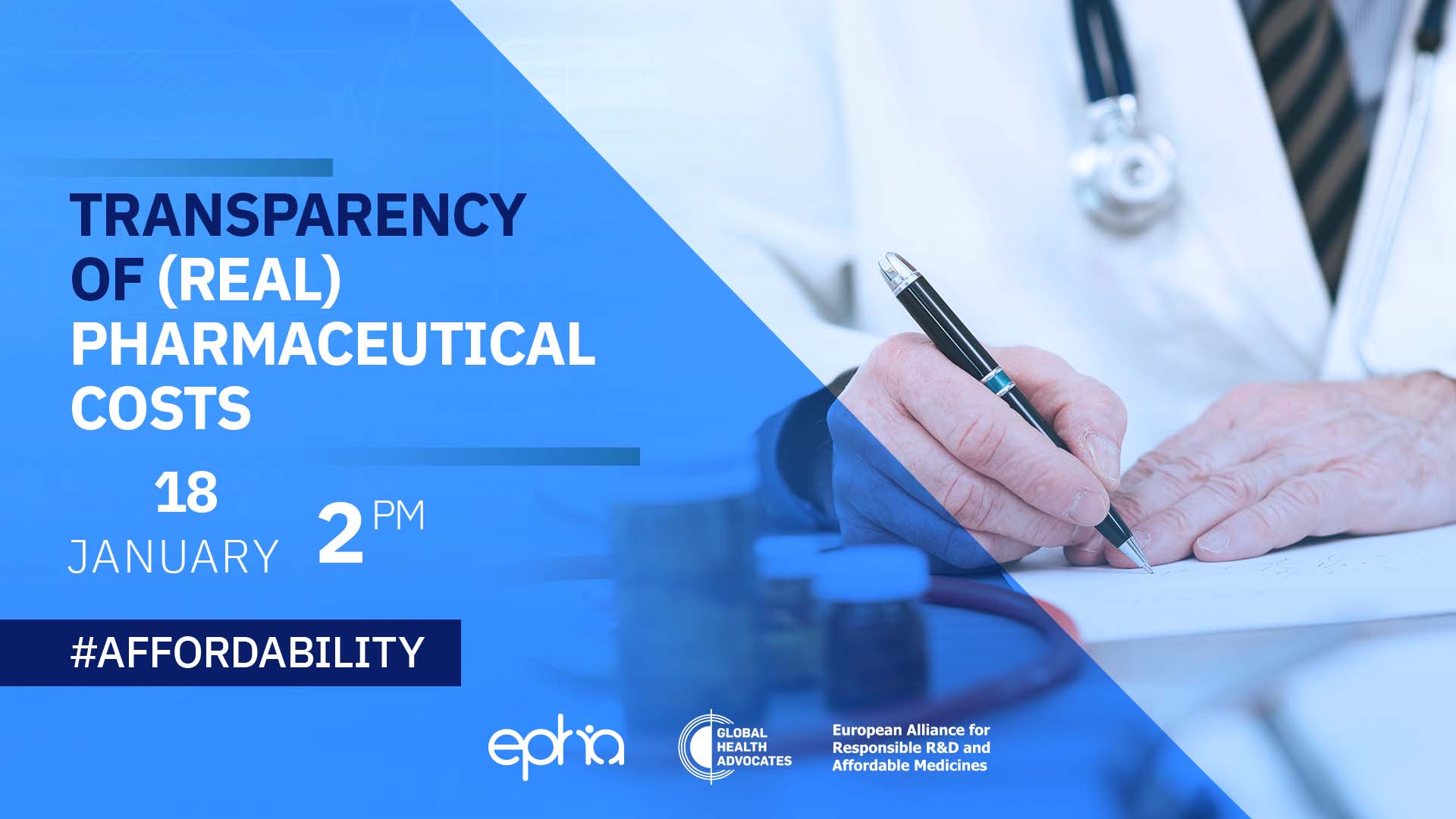On Tuesday 18 January 2022, Global Health Advocates co-hosted a webinar together with the European alliance for responsible R&D and affordable medicines and the European Public Health Alliance (EPHA).
It was the second event of the Zooming in on Solution to the Affordability of Medicines webinar series, facilitated by the European alliance. The third and last webinar will discuss procurement policies as a tool to close the access gap and will be held on January 25th, at 4pm.
Speakers and participants discussed potential obstacles and ways to establish more transparency of R&D and other real pharmaceutical costs, including the views of different stakeholders :
- Ellen ’t Hoen, Director Medicines Law & Policy, slides
- Momir Radulović, Director, Slovenian Agency for Medicinal Products and medical device, slides
- Anne Hendrickx, Advisor in the Research department of Solidaris (Belgian mutual fund), slides
- Harald Mische, Deputy Head of Unit, Medical products: quality, safety, innovation, DG Sante, slides
High prices of new medicines are affecting patient access across Europe. They are justified by the industry upon the need to stimulate innovation and to recoup high R&D costs.
However, the complete lack of transparency around the real costs for the pharmaceutical sector is an important obstacle for better understanding of what would be fair prices for new and old medicines, i.e., prices that would ensure patient access to the medicines they need.
Adopted in November 2020 by the European Commission – the new Pharmaceutical Strategy for Europe sets itself the goal of improving the access to and the availability of medicines in Europe. The strategy acknowledges that there is a lack of transparency, in particular with regard to costs of publicly (co)funded R&D. Before that, the seventy-second World Health Assembly passed a resolution to improve transparency of markets for health products. Following that resolution, Italy and France adopted new laws to support the partial disclosure of R&D costs and/or the contribution of public funding.
Against this background, this webinar focused on potential obstacles and ways to establish more transparency of R&D and other real pharmaceutical costs.






